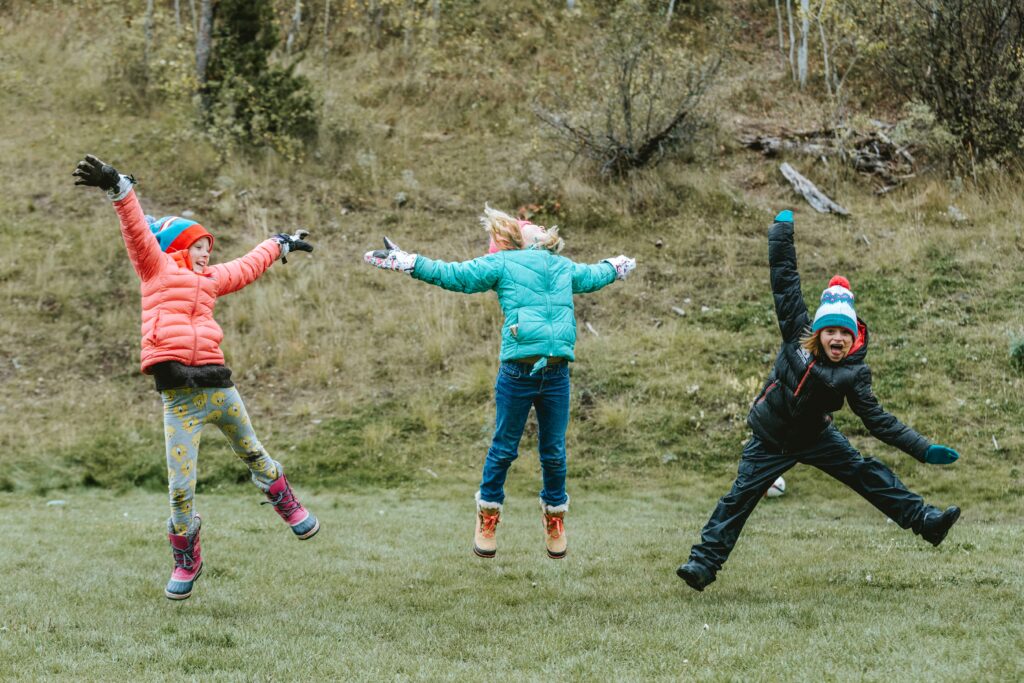Imagine this: you’re a student in elementary school (K-5) and one day, your teachers tell you that starting today, you and your classmates are going to dive into the exploration of PLAY. Your first task? Design your dream playground! What would you dream up? A climbing wall, mini ski slope, water slide, or maybe even a trampoline?
In May of last school year, teachers at Place Network partner school, Mountain River School, challenged students with this exact task. This mini lesson launched a place-based exploration of play with three essential questions driving the way:
-
-
- What is play?
- Why is it important?
- What do we learn from it?
-
Students ideas and designs were inspired by past experiences, imagination, natural materials and a collaborative mindset and let us tell you, these students had quite the dream playgrounds imagined! One Mountain River teacher wrote in a blog last year: “The playgrounds included climbing structures, zip and slacklines, obstacle courses, a working pulley, a baseball stadium, a hot tub (which included its own covered wood pile), trampolines and a gondola. When a group was asked about how they were planning on powering their water slide, they shared their hydro-power plans which included a river, dam and a water wheel.”

A zip line? A hot tub? A waterslide? SIGN. US. UP!
This school year, teachers decided to build upon last year’s initial exploration of play, challenging 3rd-5th grade students to design an outdoor play space where the youngest members of their school community — Pre-K through 2nd grade — could play, explore and construct with natural materials.
Unlike the dreamscapes that were envisioned last year, this play space would actually be brought to life by the students this year; therefore, designs would need to reflect the available resources for the project (sorry, no baseball stadium or hot tubs this time around).
So how are they doing it? We had a chance to learn more about the process Mountain River students have followed so far and how, with a little creativity, big ideas can become a reality.
*The following excerpt was originally featured on the Mountain River School blog.
Designing a Play Space
To start, 3-5th grade students used the Design Thinking process to identify solutions — beginning by establishing a general understanding of the challenge and engaging in a class brainstorm. Ideas were plentiful, as students drew from prior experiences and their study of play at the end of last year.
Next, students brought their ideas to life on paper through detailed concept drawings. Students demonstrated flexible thinking by tweaking their designs after getting the chance to walk the play space site and ask clarifying questions.
With their refined concepts in hand, students made a presentation to Prek/Kindergarten educator, Amanda, who was able to share what she liked about the students’ designs and thought would work especially well for our youngest community members, including:
-
-
- a rock, sand and mulch pit
- an open grass section
- a loose parts area
-
Taking all they had learned, as well as a list of available materials, students refined their designs once more. They then conducted walk-throughs where they demonstrated their design ideas to their peers and everyone made notes about what worked well. Finally, they came together as a class to create a final design proposal.
Bringing the Play Space to Life
With their final design proposal in hand, students were ready to bring their concepts to life. They worked in groups to mark out play space areas with flagging tape. They then took a moment to empathize with their audience by pretending to be little once again and play in the space and make necessary tweaks to the layout.
Students’ next task was taking measurements of the area and laying out their design on grid paper. They used math to calculate and document perimeter, area, volume, and diameter. Accurate measurements and calculations were necessary for proper placement of objects and ordering of supplies, like mulch.

Watching the delivery of some massive local logs — and marveling at the strength of the hydraulic arm that lifted them like toothpicks — was an exciting moment. Once delivered, students tried rolling the logs into place. They learned quickly, it was not possible to move the massive logs without creative strategies, and ultimately help. Mountain River parents, Noel and Jim, brought the necessary tools and knowledge to help students move the logs. Students had the chance to experience using a peavey to coax the logs into place, creating barriers for the sand, rock and mulch pits they had included in their design.
As of now, the Play Space Project is just in its infancy. In fact, this is just Phase I. There are still supplies to be delivered, and work to be done. So, stay tuned!


